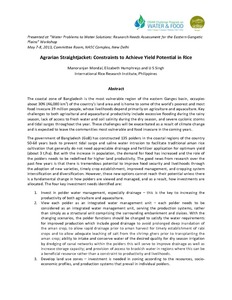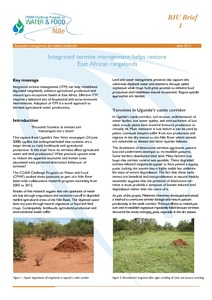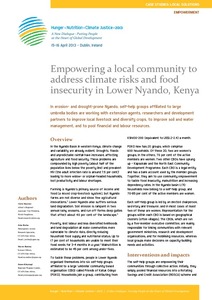Agrarian Straightjacket: Constraints to Achieve Yield Potential in Rice
The coastal zone of Bangladesh is the most vulnerable region of the eastern Ganges basin, occupies about 30% (46,000 km2) of the country’s land area and is home to some of the world’s poorest and most food insecure 39 million people, whose livelihoods depend primarily on agriculture and aquaculture. Key challenges to both agricultural and aquacultural productivity include excessive flooding during the rainy season, lack of access to fresh water and soil salinity during the dry season, and severe cyclonic storms and tidal surges throughout the year.











